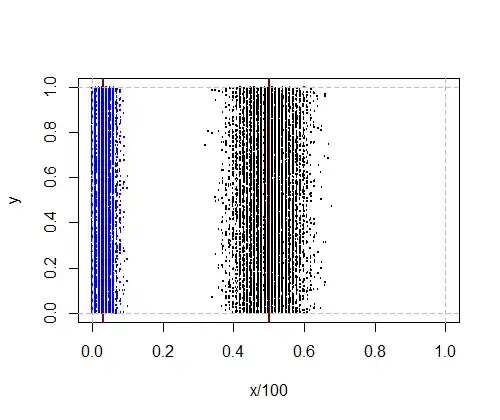I have a pdf of a random variable that looks like image below (the support is $[-1,1]$). It is actually function of another random variable, let's say $T = aX + bY + cZ$. When I changed parameters $(a,b,c)$, the pdf changed from the orange bars into the blue bars. You see that it can change from normal-kind of distribution into uniform-kind of distribution. I plan to use method of moments to approximate the distribution, but what distribution that best fits with the one I have here?
Asked
Active
Viewed 166 times
0
kjetil b halvorsen
- 63,378
- 26
- 142
- 467
DEVA
- 137
- 8
-
1Distributions $X$ on the range $[-1,1]$ can often be thought of as transformations $X = \cos(\Theta)$ of distributions $\Theta$ on the range $[0,2\pi]$, e.g. angular distributions. – jwimberley Dec 06 '16 at 12:29
-
@jwimberley Thank you. That's exactly what I'm working on. I'm trying to figure out the pdf of $\cos(\Theta)$ with $\Theta$ is angle between fixed vector and a randomly oriented unit vector (which has random polar and azimuth angles). Could you please point out some references about it? – DEVA Dec 06 '16 at 15:14
-
1I deleted my own comment because I wasn't clear that it was useful. I'd just flag that circular distributions have their own special rationale, namely that $0$ and $2\pi$ are one and the same angle. von Mises distribution is in various strong senses the default circular distribution. But it has just one mode and one antimode. Many families have been introduced fairly recently by Arthur Pewsey and his collaborators. – Nick Cox Dec 06 '16 at 16:36
-
@DEVA ... Please incorporate the important information from your comment into your question – Glen_b Jul 30 '17 at 20:11
-
This does not answer your question directly but check https://stats.stackexchange.com/questions/203629/is-there-a-plateau-shaped-distribution – Tim Sep 22 '17 at 09:24
2 Answers
1
I would try to fit with a mixture of a uniform (on $[-1,1]$) and a Beta distribution. Beta distributions are usually defined on $[0,1]$, but can be easily transformed to $[-1,1]$.
kjetil b halvorsen
- 63,378
- 26
- 142
- 467
0
You could use normal distribution with mean equal to zero, truncated between -1 and 1. With large enough standard deviation, it would be nearly flat, with smaller values it’d have bell curve shape.
Tim
- 108,699
- 20
- 212
- 390
